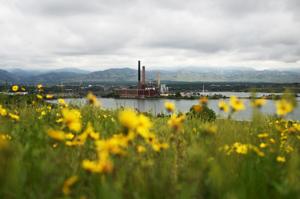A silent but pervasive environmental threat has emerged from the depths of Boulder, Colorado, where millions of tons of coal ash, byproduct of past energy production, are quietly contaminating vital groundwater sources. At the heart of this escalating crisis is the decommissioned Valmont Power Station, formerly operated by Xcel Energy. Since its cessation of coal-burning operations in 2017, the facility has left behind an estimated 1.6 million tons of toxic coal ash buried on its property, a legacy now actively imperiling the region’s environmental health and public well-being.
The core of the issue lies in the insidious process of leachate. This substantial volume of buried coal ash is not benign; it contains a dangerous cocktail of hazardous metals and other harmful chemicals. Through natural hydrological processes, these toxic substances are actively seeping directly into the underlying groundwater system, turning what was once a secure burial site into a conduit for widespread environmental pollution. The slow but persistent migration of these contaminants poses an invisible yet profound threat, making effective remediation both complex and urgent.
The implications of this extensive groundwater contamination are far-reaching and deeply concerning. Communities living near the Valmont Power Station face a significant public health risk as their primary water sources become compromised. Potential impacts extend beyond drinking water, threatening aquatic life and the delicate balance of local ecosystems dependent on clean water. The long-term effects on human health, including chronic illnesses linked to heavy metal exposure, loom as a serious worry for residents and public health officials alike, underscoring the critical need for immediate intervention.
This incident also casts a harsh spotlight on the broader questions of corporate accountability and the adequacy of environmental regulations. The responsible management of industrial waste, particularly hazardous byproducts like coal ash, is paramount. The situation in Boulder raises critical inquiries into how energy companies handle post-operational site management and whether existing environmental oversight is robust enough to prevent such extensive and long-lasting pollution. It challenges stakeholders to re-evaluate the regulatory frameworks governing waste disposal and ensure that preventative measures are truly effective.
In response to the burgeoning crisis, environmental advocates and local residents have voiced strong concerns, calling for comprehensive and swift remediation efforts. Their demands include immediate action to halt further toxic seepage and a thorough plan to address the existing contamination that has already infiltrated the groundwater. The imperative is clear: safeguard natural resources and public well-being from the enduring environmental challenges posed by historical energy production methods. This collective call to action emphasizes the urgency of transitioning away from practices that leave such dangerous legacies.
The Boulder coal ash contamination serves as a sobering reminder of the lasting consequences of industrial activities and the imperative for proactive, robust solutions to protect our planet’s most vital resources. As the hazardous chemicals continue to seep, the narrative around the Valmont Power Station becomes a case study in the complex intersection of energy policy, environmental stewardship, and community health. It highlights the ongoing battle to mitigate past environmental damages and build a sustainable future free from the shadow of buried toxins.
Discover more from The Time News
Subscribe to get the latest posts sent to your email.






